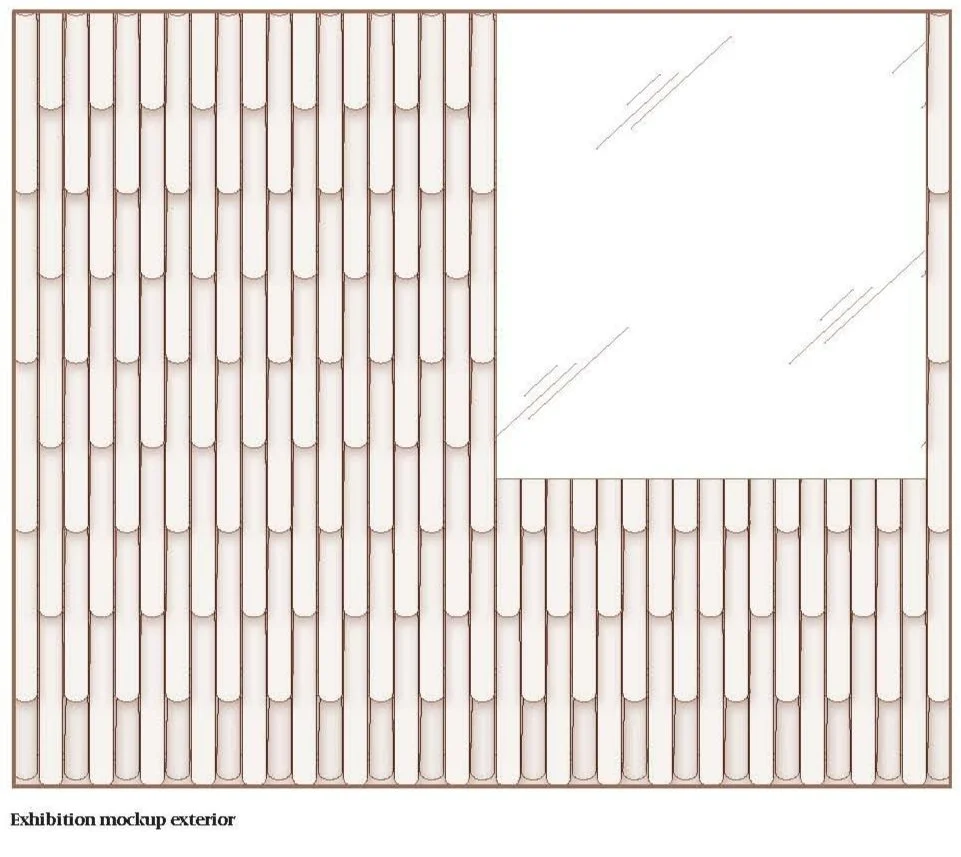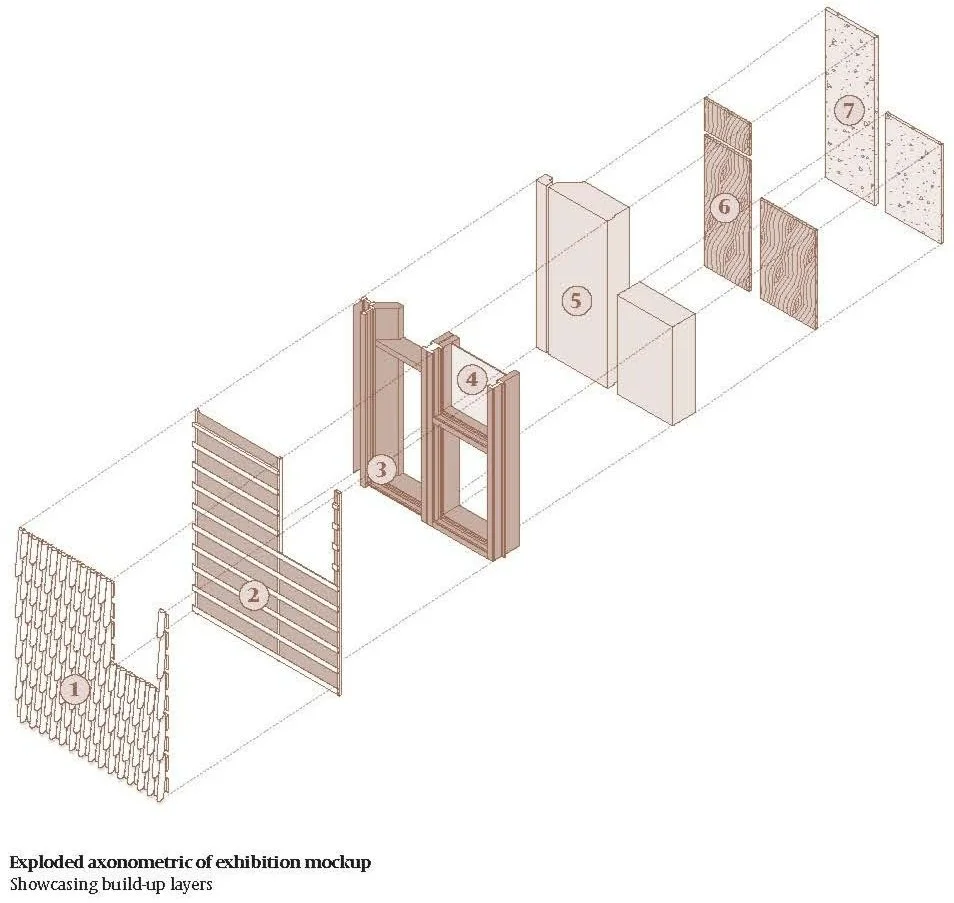Next Steps
What are the next steps required to advance the project?
The prefabricated system requires extensive fire, moisture, and weather chamber testing to validate its durability and environmental performance. Structural testing of the laminated sections will be necessary to confirm their strength, particularly in relation to engineered joints and the overall stability of the facade system. Achieving CE regulatory compliance, securing warranties, and establishing clear maintenance protocols will be crucial for industry acceptance.
Beyond compliance, optimizing the production process for industrial-scale manufacturing is essential. The project must establish clear specifications for maximum and minimum product dimensions, including cross-section widths, depths, and framing lengths. Investigating the material’s thermal conductivity, moisture content, and environmental impact through an Environmental Product Declaration (EPD) will provide necessary data on its embodied carbon emissions. At the facade system level, testing must also include structural connection integrity, air permeability, wind resistance, and impact performance.
What needs to be done in order to achieve a larger-scale implementation?
For the willow facade system to transition from its current Technology Readiness Level (TRL) 4-5 to TRL 8, real-world testing in a pilot project is essential. However, beyond pilot implementation, broader industry engagement will be required to drive adoption.
Establishing a streamlined supply chain is crucial. Coordination between raw material suppliers, manufacturers, and construction industry partners will ensure that growing cycles align with production demands and that processing lead times can meet project timelines. Cost-effectiveness must also be carefully evaluated, particularly in scaling up from smaller furniture production methods to industrial-scale construction manufacturing. Consolidating drying, cutting, heat-treating, and laminating processes will help reduce logistical inefficiencies and transportation burdens.
Strategic marketing efforts must be developed to introduce the system to architects, developers, and contractors. Emphasizing its environmental, structural, and aesthetic advantages will be key to securing industry interest and investment.
↑ Production ― Courtesy of Wood Zone
What technical challenges need to be addressed?
A primary technical challenge is fire testing, as willow’s low density currently limits its pre-approved use in facades above two floors. Without an existing regulatory framework for its fire resistance at greater heights, further testing will be required to explore potential solutions, such as fire-retardant treatments or hybrid compositions that meet industry standards. Engaging with legislators and certification bodies to establish pre-accepted fire safety solutions will be essential to overcoming this barrier.
Optimizing the structural connections of laminated willow, at joints and lifting points. Traditional carpentry connections could offer viable alternatives to existing assembly methods, and their performance must be evaluated against industry standards for air permeability, watertightness, and wind resistance. Accelerated weather testing will provide insights into the material’s long-term durability.
By addressing these challenges while refining the material’s supply chain, manufacturing efficiency, and market positioning, the willow facade system can move closer to large-scale implementation.
1 ― Willow pressed-boards
2 ― Heat-treated laminated sections
3 ― Wood fiber insulation
4 ― Diathonite
5 ― Insulated glazing unit (IGU)
Could building materials become a service?
An alternative approach could explore the potential for offering the facade system as a service, with a review of the business plan to assess its viability. This could mitigate concerns regarding warranty and de-risk early adopters in the procurement process.
1 ― Willow sections
2 ― Clipping system + waterproof membrane
3 ― Heat-treated laminated sections
4 ― Insulated glazing unit (IGU)
5 ― Wood fiber insulation
6 ― Willow pressed-boards
7 ― Diathonite






